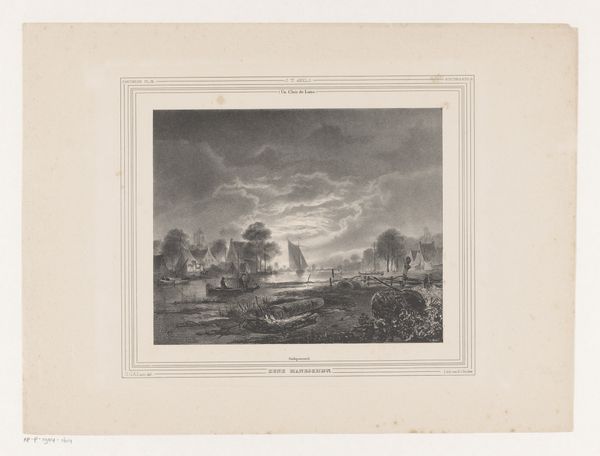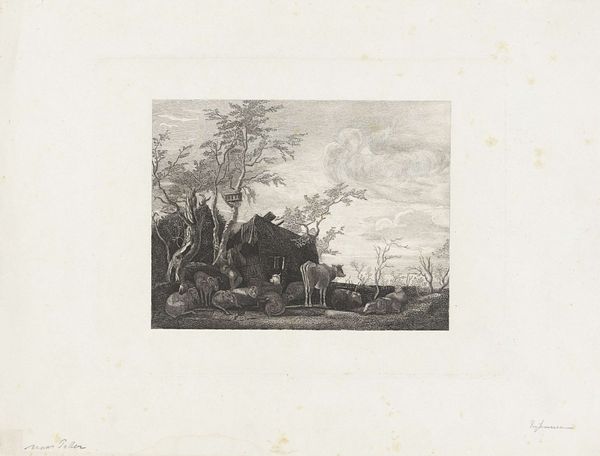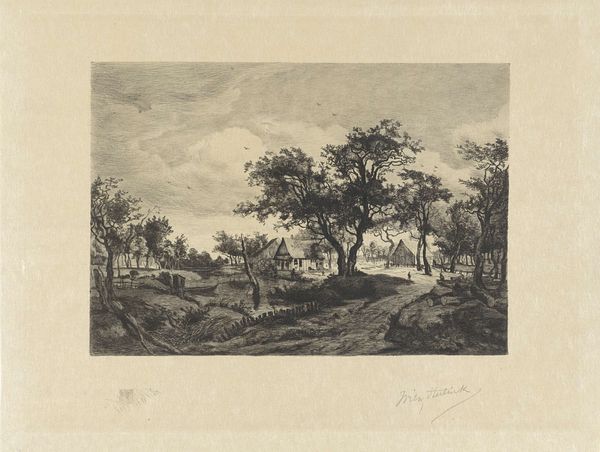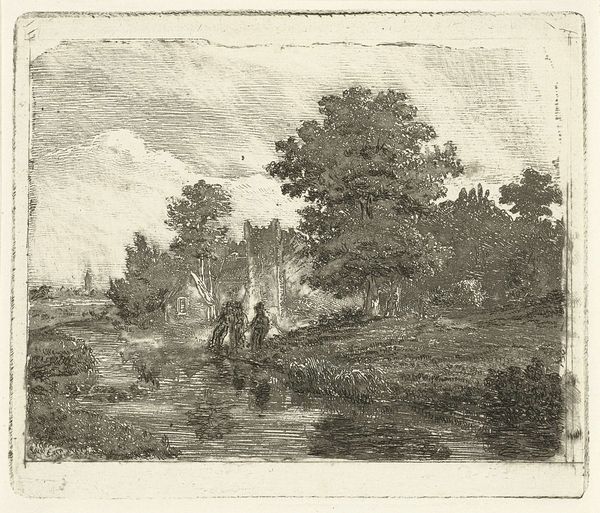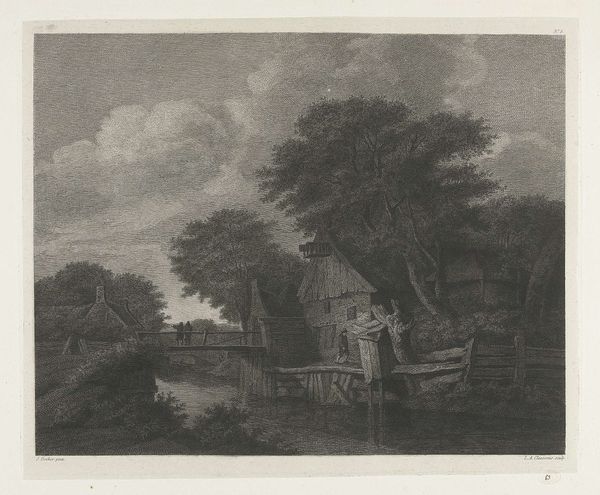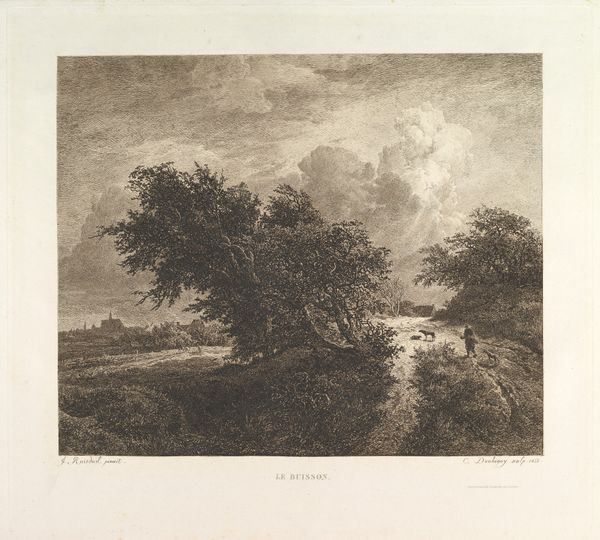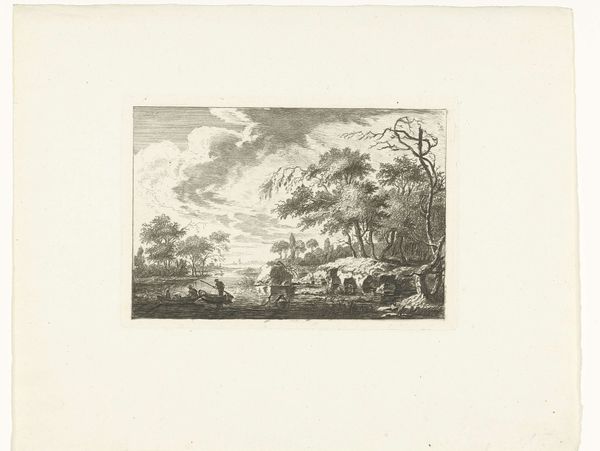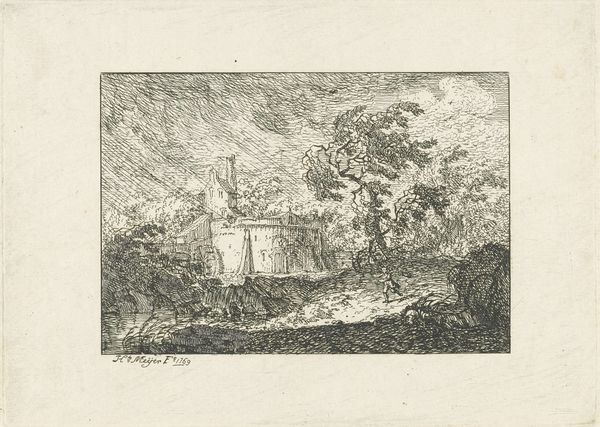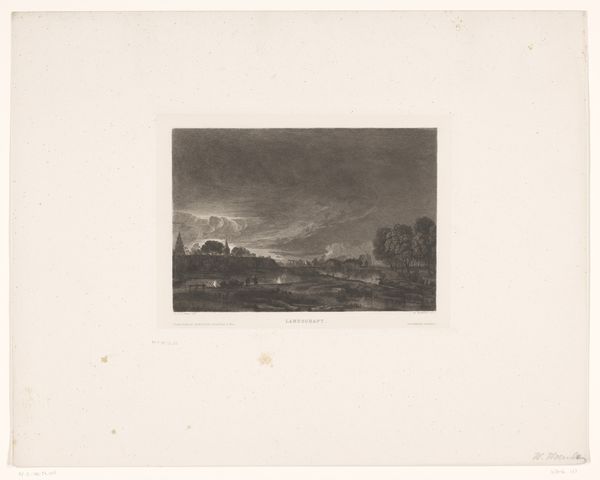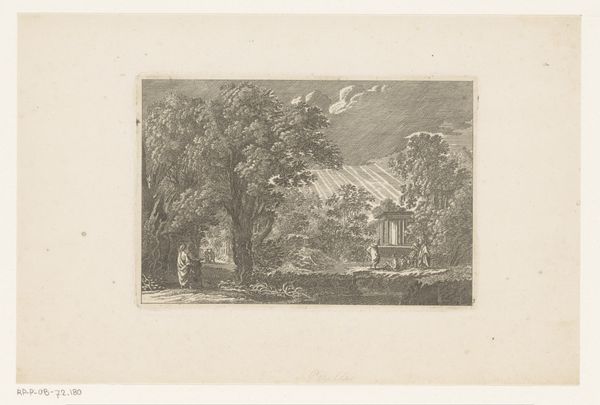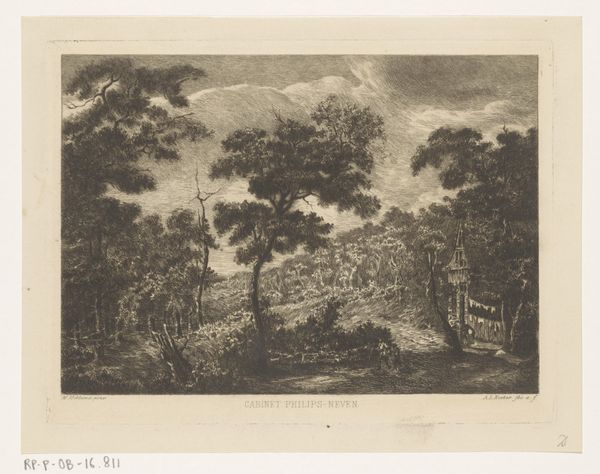
drawing, print, etching
#
drawing
#
dutch-golden-age
# print
#
etching
#
landscape
#
pencil drawing
#
monochrome
Dimensions: height 258 mm, width 349 mm
Copyright: Rijks Museum: Open Domain
Willem Steelink the Second created this landscape by moonlight as an etching. It is a scene of rural tranquility, bathed in soft light, but what might it tell us about Dutch society at the time? Made in the late 19th century, the image speaks to the prevailing artistic trends, rooted in the Hague School's interpretation of French Realism, and a desire to record the everyday life of the Netherlands. However, look closer and you'll notice the church steeple in the background. What role did the church play at this time in the Netherlands? The Netherlands in this period was undergoing significant social and economic change, with industrialization and urbanization reshaping the country. A print like this might reflect a longing for a simpler, pre-industrial past, or even offer a commentary on these changes. Art historians consult archival material such as exhibition reviews and artists' letters to understand such works in detail. This gives us an understanding of art as tied to social context.
Comments
No comments
Be the first to comment and join the conversation on the ultimate creative platform.

